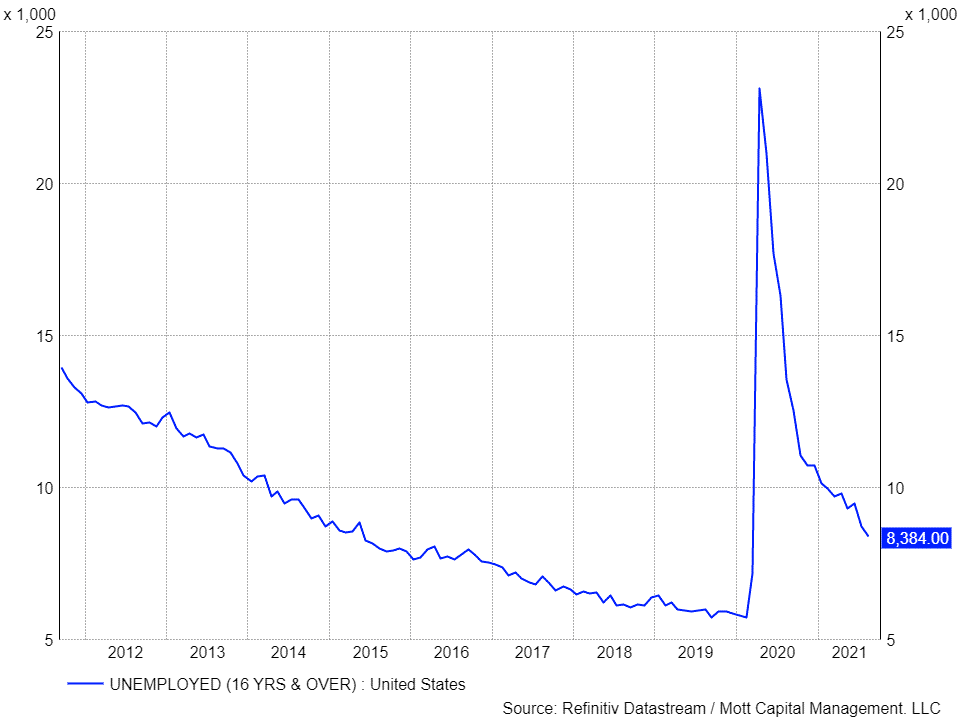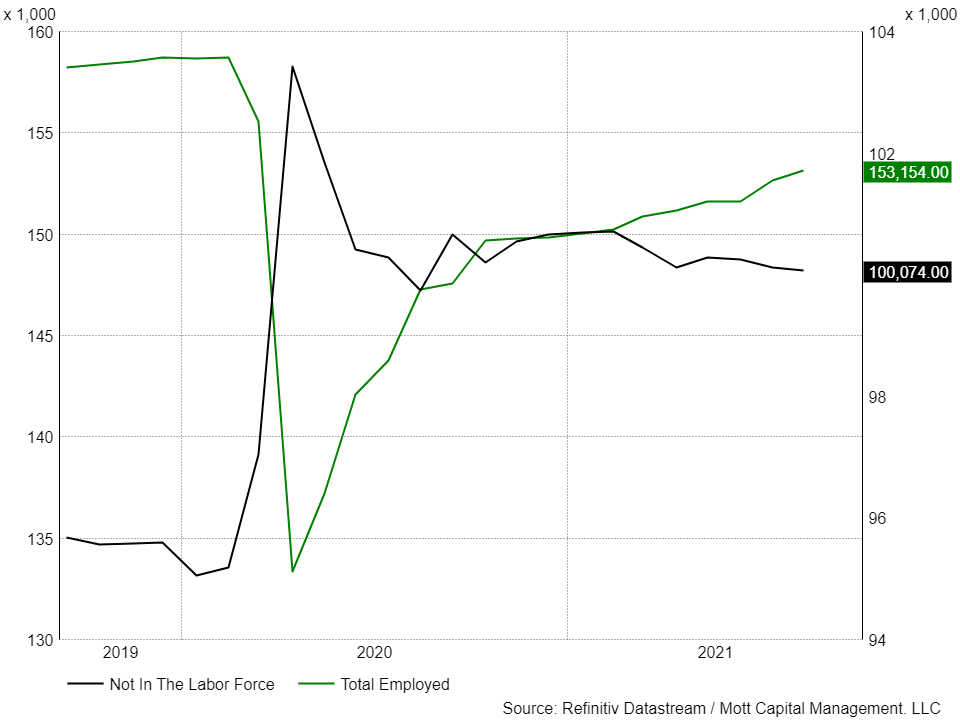This article was written exclusively for Investing.com
The immediate reaction of most investors to the big miss by the August nonfarm payroll report has been that the economy is weakening so a Fed taper will be delayed.
Yes, GDP growth is moderating; the Atlanta Fed GDPNow model as of Sept. 2 suggests that the third quarter is growing by 3.7%. That is a far cry from what many had hoped for at the start of the quarter.
However, it does not mean the Fed will delay tapering. When digging through the latest BLS jobs report, there were plenty of positives that indicate the job market is getting stronger, and this should keep the Fed on track to begin tapering in either September or November.
The Job Report Should Not Delay Tapering
Perhaps one of the most robust features of this latest jobs report was the U-6 measure of underemployment. The rate fell to 8.8%, its lowest level in the post-COVID era. This number is especially impressive because the Fed ended QE in 2014 when this rate was much higher—over 10%—and then hiked interest rates in 2015.
In 2004 the U-6 reading was also around 10% when the Fed began to tighten monetary policy. By the U-6 standard, it would seem the threshold to taper asset purchases has been met.

Strong Results
Even more impressive was the decline in the number of people unemployed, dropping by 318,000 to 8.4 million from 8.7 million in July and 9.5 million in June. The significant part about this total is that the lower reading was not due to people dropping off and no longer being counted as unemployed. The not in the labor force metric had its third straight month of declines and fell by 49,000 in August to 100 million. Additionally, the employed metric rose by 509,000 to 153.1 million in August from 151.6 million in June. Overall, the labor force grew in size to 161.5 million in August, up by 190,000. All of this data shows that people looking for work in August found it, and people who were not part of the labor force came back into the job market.

Given this, it seems as if the job market is pretty robust, and while the GDP growth is moderating, it appears to be returning to its longer-term trend. That return to trend is happening faster than most people believed it would. However, the economy returning to its long-term trend is not a reason to delay the tapering process.

Now’s The Time
If anything, now is the perfect time for the Fed to taper and not to delay. The US equity market is trading at an all-time high and, for the most part, has completely ignored any risk that tighter financial conditions may bring to it. Should the Fed wait, it only provides the equity market a chance to move lower before a taper, creating a situation the Fed should try to avoid. A stock market correction is never fun, but it may be easier to navigate from a record high from a positioning standpoint.
While the economy has slowed in the third quarter and the headline job number for August missed expectations, not much has really changed from the Fed’s point of view. The economy is quite strong and no longer in need of the ultra-accommodative monetary policy.
